Princess Diana's Clashes with Queen Elizabeth: Inside Their Complex Relationship
- Oops!Something went wrong.Please try again later.
- Oops!Something went wrong.Please try again later.
- Oops!Something went wrong.Please try again later.
- Oops!Something went wrong.Please try again later.
Dotdash Meredith and Yahoo Inc. may earn commission or revenue on some items through the links below.
Andrew Morton's groundbreaking 1992 memoir about Princess Diana made him a key figure in one of the most-talked-about periods in royal history. After writing Diana: Her True Story (with his subject, Diana, as his secret source), the author was thrust into the center of the royal saga—and is now a character (played by Andrew Steele) on season 5 of Netflix's The Crown.
Now he's revisiting those tumultuous years in a new book, The Queen: Her Life, out now, which captures the legendary reign of Queen Elizabeth, who died on Sept. 8 at age 96.
"She was very supportive of Diana," Morton tells PEOPLE. "Diana always felt that the Queen was a kind of marital referee and that the Queen should really intervene over her husband's relationship with Mrs. Parker Bowles. But the Queen's policy was to hope for the best."
By the end of her life, the Queen had become a beloved grandmother figure. "We all thought she was superhuman," he says. "She was, in fact, human."
Here, excerpted from his new book, a look back at the turmoil that surrounded the Queen in the '90s, "probably the worst decade of her reign," Morton says.
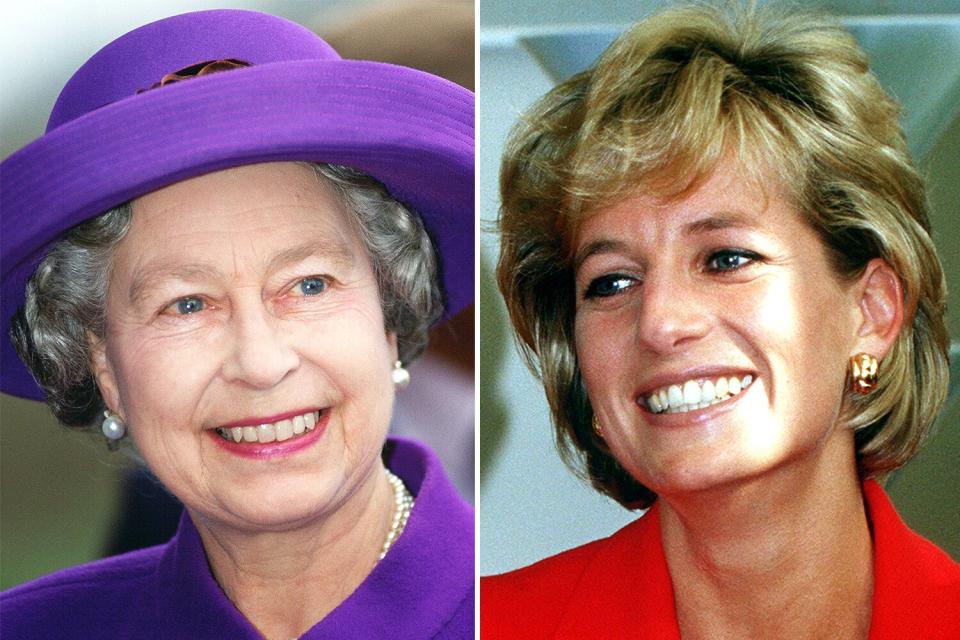
Tim Graham Photo Library via Getty, Jayne Fincher/Getty Queen Elizabeth and Princess Diana
All eyes were on Princess Diana and Prince Charles in the early '90s as they were plagued with rumors of marital trouble.
The dam burst on June 14, 1992, with the publication of the biography Diana: Her True Story. What was shocking was the book's depiction of a royal world where the emotional temperature was chilly and the social landscape forbidding. When the book was first serialized in The Sunday Times under the front-page headline "Diana Driven to Five Suicide Bids by 'Uncaring' Charles," the response was explosive. Criticism of the book—which came from all sectors of society—was severe and unrelenting.
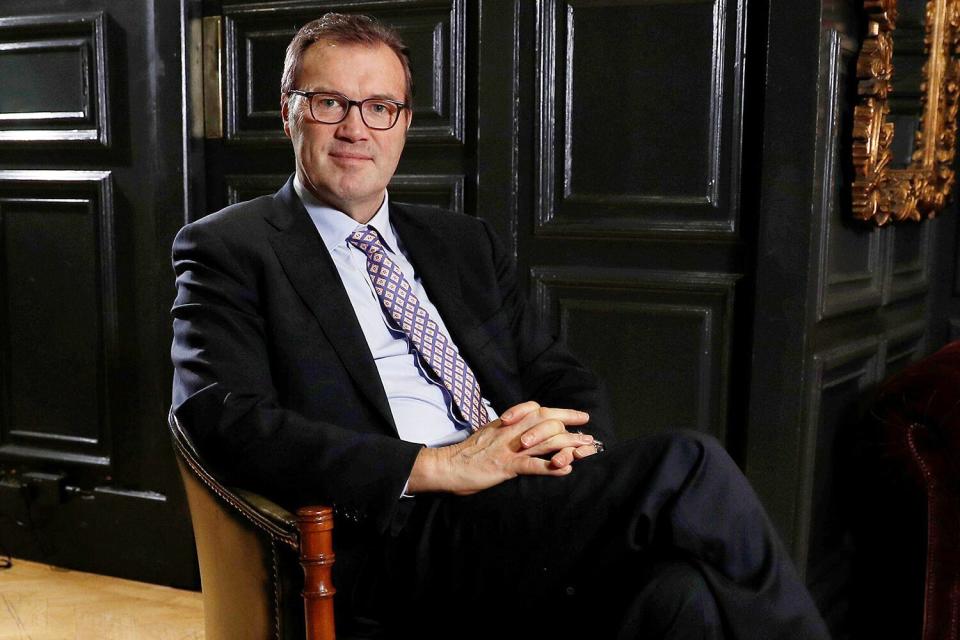
REUTERS/Alamy Andrew Morton
Though the Queen had been painfully aware of the marital rift for some time, she was unprepared for such a detailed public exposition. While the palace was searching for a suitable strategy, outwardly it was business as usual. Diana stood beside the Queen on the balcony at Buckingham Palace for the official birthday salute and joined the royal family at Windsor Castle for Ascot week. Behind the scenes the Queen and her aides tried to manage the unhappy situation. Her private secretary Robert Fellowes asked the princess point-blank if she had cooperated with the book. She looked him in the eye and told him a bald-faced lie: "No."
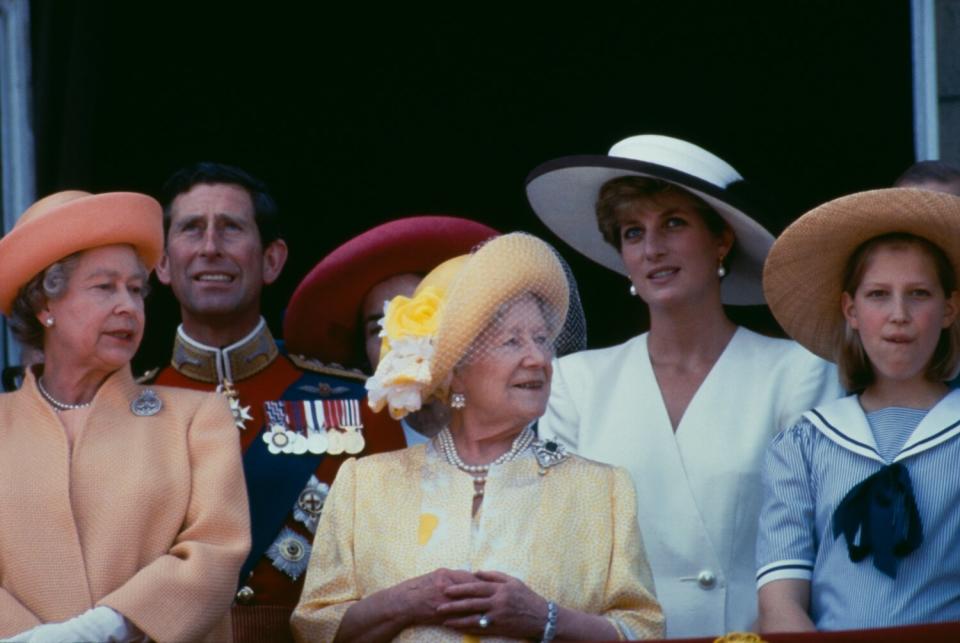
Jayne Fincher/Princess Diana Archive/Getty Queen Elizabeth and Princess Diana join the royal family on the Buckingham Palace balcony during Trooping the Colour 1992
Everyone, including the Queen, was now coming to accept that the only workable way forward for the warring prince and princess was a separation in 1992.
Days after the separation announcement Diana made an appointment to see the Queen at Buckingham Palace. When she entered the Queen's suite, she burst into floods of tears, Diana claiming that everyone was against her. "The Queen didn't know what to do," recalled a lady-in-waiting afterward. "She has always hated this kind of emotional confrontation and, frankly, has never had to deal with it before or since." During their hour-long conversation, which was punctuated by tears, the Queen was able to reassure Diana that, come what may, she would never be challenged regarding custody arrangements for her two boys. This was a profound relief for the princess, who had fretted about this issue long before the actual separation.
For the next few years the "War of the Waleses" consumed the media and agitated the Queen and the rest of the royal family. Everyone tiptoed around Diana, concerned that the unpredictable princess, referred to as a loose cannon, would further damage the already listing institution. Much against the better judgment of her mother and sister, the Queen tried to keep Diana within the fold, quietly hopeful that at some point Charles and his wife could effect a reconciliation. At this delicate period the olive branch was ever present.
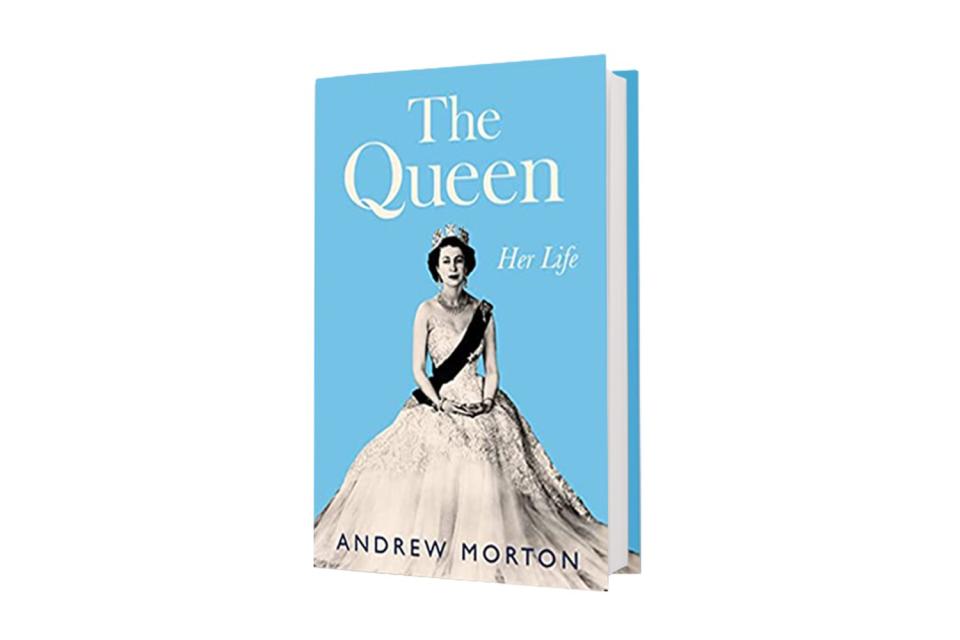
For her part Diana, somewhat naively, continued to see the Queen as a family referee with regard to her separation from Princes Charles. She was frustrated that she had not intervened to end Prince Charles's relationship with Camilla Parker Bowles. The Queen and the Queen Mother had shown their disapproval of this long-running affair by refusing to invite Mrs. Parker Bowles to any court functions. It was, as far as Diana was concerned, not enough. "My mother-in-law has been totally supportive but it's so difficult to get a decision out of her," she observed diplomatically. Essentially she was playing a waiting game, prepared to sit on the sidelines until her husband took the initiative and asked for a divorce. She felt that as he had asked her to marry him, he should be the one to initiate proceedings. It was a view she made clear to the Queen in the hope that she would push her son in the direction of divorce.
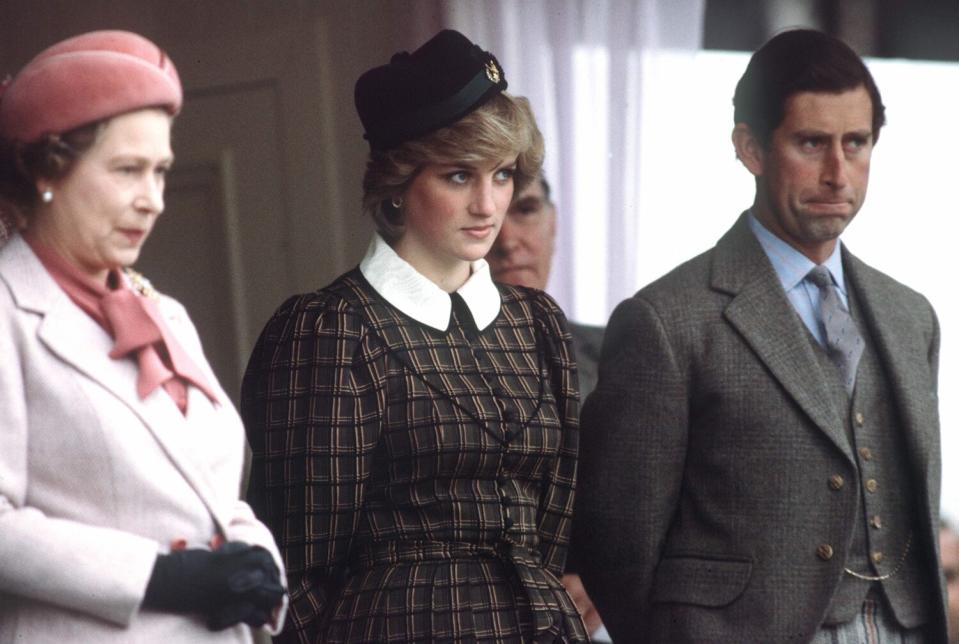
Tim Graham Photo Library via Getty Queen Elizabeth, Princess Diana and Prince Charles
Princess Diana shocked the world—and the royal family—when she gave a no-holds-barred interview to the BBC's Panorama.
In November 1995 Diana appeared on BBC's Panorama show, where she spoke candidly about her loves and her life. Wearing striking black eye makeup that gave her a haunted look, she dis- cussed her eating disorders, her failed marriage, her depression, and her husband's adultery. She talked about her lover James Hewitt, her belief that Charles was not up to the "top job" of king, and her desire to be the "queen" of people's hearts. She reserved her most devastating zinger for her love rival Camilla Parker Bowles. When interviewer- er Martin Bashir asked about Camilla's role in the marriage, she said sweetly: "Well, there were three of us in this marriage so it was a bit crowded."
When it was broadcast her television confessional was both shocking and, as far as the royal family was concerned, unforgivable.
When the Queen finally watched a recording of the show, she was despairing, her husband apoplectic. Something had to be done, for the sake of not just the monarchy but also their grandchildren. The Queen, having held out the olive branch for so long, was now determined to cut the marital Gordian knot.
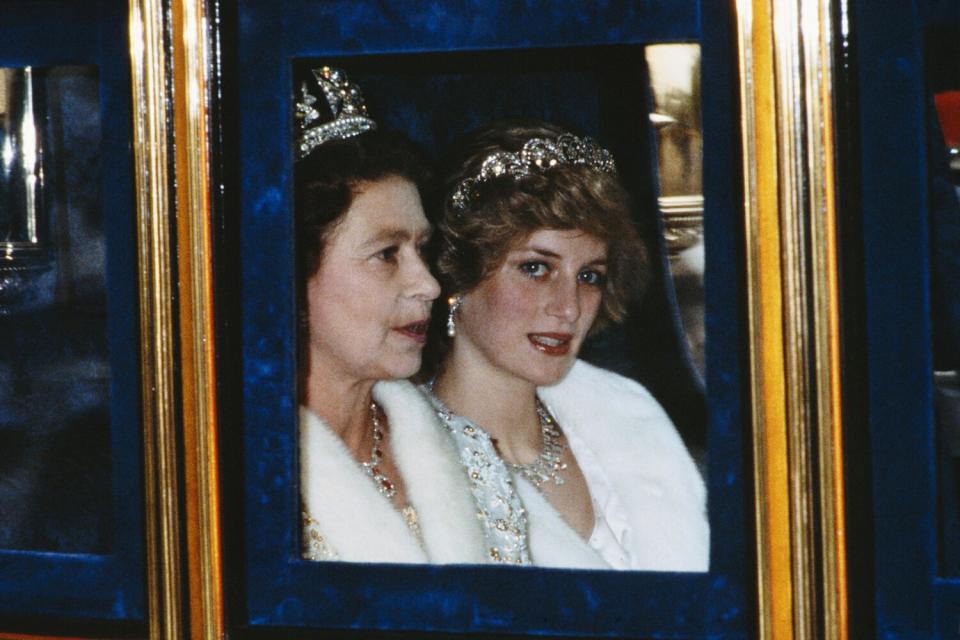
Terry Fincher/Princess Diana Archive/Getty Queen Elizabeth and Princess Diana
As soon as the Queen had made up her mind that Charles and Diana should indeed divorce, matters moved quickly.
On Dec. 18, Diana received a handwritten note from the sovereign delivered by a uniformed courier to Kensington Palace from Windsor Castle. It was, Diana noted ruefully, the first letter she had ever received from her mother-in-law. In part the letter said: "I have consulted with the Archbishop of Canterbury and with the prime minister and, of course, with Charles, and we have decided that the best course for you is divorce."
Even in this personal crisis, the Queen invited Diana to stay with the family at Sandringham for Christmas. Diana declined, telling friends that she would "[go] up in my BMW car and come out in a coffin." Instead she spent Christmas on her own at Kensington Palace before flying off for a holiday in the Caribbean.
Can't get enough of PEOPLE's Royals coverage? Sign up for our free Royals newsletter to get the latest updates on Kate Middleton, Meghan Markle and more!
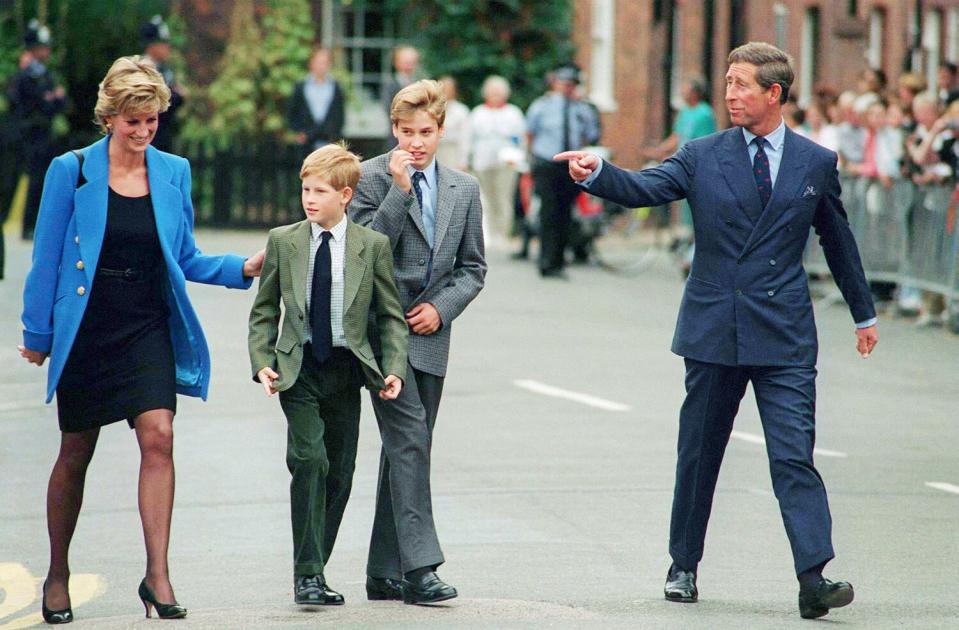
Anwar Hussein/WireImage Princess Diana, Prince Harry, Prince William and Prince Charles in 1995
The princess's decision to decline the sovereign's invitation, normally viewed as a command, marked the nadir of her relationship with the Queen. It was an affront too many. From now on, the Queen was not always available to take her phone calls or ready to invite her to afternoon tea. Their dealings were necessarily more business-like than before as the Queen was one of the interested parties in divorce negotiations.
Diana's future title did, though, become a matter of dispute. It was reported that she had decided to be known as Diana, Princess of Wales, and had told friends that she had agreed to drop the appellation Her Royal Highness. The Queen intervened, making clear that Diana's "decisions" were still requests and that she had not been pressured to give up the HRH. "It is wrong that the Queen or the Prince asked her," said an official palace spokesman. She may have given up her title, which meant curt- sying to junior royals, but she had become a very rich woman in her own right, with a settlement of around £17 million ($20.5 million). As for her title, Prince William told her: "Don't worry mummy, I will give it back to you one day when I am king."

